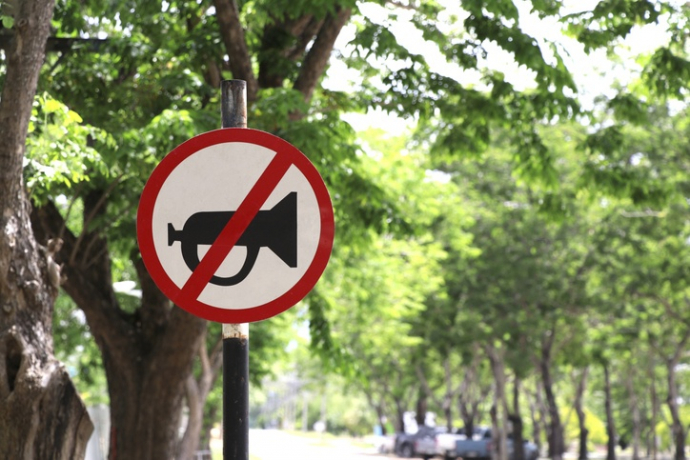
The need to control traffic speed is as old as cars themselves. A stubborn refusal over the last century to implement engineered solutions such as speed limiters has led to a reliance on camera technology.
Following a period of explosive growth in car ownership in America during which the number of increased from 200,000 motorised vehicles in 1909 to 2.25 million in 1916, politicians, police and judges debated how to control them.
As most people had yet to own their own car, the response to mounting carnage was visceral; newspapers labelled killer drivers as ‘remorseless murderers’ and likened the threat they posed to public health to an epidemic disease.
In Detroit – an American city synonymous with car production – angry mobs would drag dangerous drivers out of their cars. When John Harrigan, was convicted of killing a man while drink driving, he was paraded in handcuffs by police in the Safety Parade of 1922.
As described by Bill Loomis in his book on Detroit history ‘On This Day’, bells on fire stations, churches, schools and City Hall rang twice a day in memory of the road fatalities. Other towns printed ‘murder maps’ showing the locations of road deaths.
So-called safety parades featured wrecked cars occupied by mannequin drivers dressed as Satan and bloody corpses as passengers. New York City and Washington DC held parades featuring 10,000 children dressed as ghosts, each representing a road death that year. The processions were followed by grieving mothers who wore white or gold stars to indicate the loss of their child.
Inevitably, American courts began to consider implementing speed governing devices for cars – a move that infuriated the car industry’s use of speed as a selling point.
The impending PR disaster for car makers was tackled by multi-millionaire former Ford executive, and later politician, James Couzens who pioneered victim blaming in this field insisting pedestrians hit by cars were at fault through carelessness and the newly-coined offence of jaywalking.
Couzens insisted that pedestrians cross at designated points prompting Detroit City Council Alderman Sherman Littlefield to say of motorised traffic, “They dog the people enough as it is. I’m not in favour of trying to herd people into certain places to cross streets.”
Littelfield’s voice was lost amid the clamour for a new motoring age, but in a world that now sees 1.25 million people killed on its roads every single year, cars have yet to be fitted with effective speed limiters as standard. It’s one of the reasons countries like the UK have to rely on speed enforcement cameras.
Speed cameras
Putting aside the question of why it’s possible to buy cars for the road that are capable of exceeding the national speed limit by 100%, neither the threat to other people’s lives nor the risk of penalties dissuades motorists from driving within the law. For example, in the 20mph zones intended to safeguard areas where people live and children go to school, 86% per cent of car drivers were found to be breaking the speed limit.
The figures above are based on data collected by the Department for Transport’s Automatic Traffic Counters (ATCs) and excludes locations where factors such as junctions, hills, sharp bends or speed cameras might slow drivers. In other words, the statistics provide insights into speeds at which drivers choose to travel when free to do so.
An expansion in the use of speed cameras under the 1997 New Labour administration contributed towards a near halving of road deaths over the following decade. The subsequent Conservative government pledged an end to the so-called ‘war on motorists’, removed many of the cameras and the road death number has plateaued ever since.

Roadside noise cameras
Research commissioned by the Department for Transport, found that a noise camera system could help tackle extremely noisy vehicles which breach legal noise limits. It could also help to catch those who rev car or motorcycles engines beyond legal limits, making life a misery for those who live close by.
Noise pollution has a detrimental effect on our health and our general quality of life and yet there is no threshold limit for road traffic noise in the European Union.
People who live in areas affected by high levels of road traffic noise may be more likely to suffer heart attacks than people in quieter areas, according to a study of 1,500 people in Stockholm.

Researchers at the Karolinska Institute looked at people who had suffered a heart attack and once they had eliminated those with hearing impairments and those exposed to other sources of noise they found levels of traffic noise above 50 decibels increased the risk of heart attack by 40 per cent.
Noise pollution is a serious and under-reported environmental problem. According to the World Health Organisation, 40 per cent of Europeans are regularly exposed to road traffic noise exceeding 55 decibels. In Sweden, it is illegal for noise levels to exceed 55 decibels at the front of a building.
The title of the Swedish study is Traffic Noise and Risk of Myocardial Infarction and it is published in full at www.epidem.com
Mobile phone use enforcement cameras
A camera system which uses AI to detect speed, phone use, and whether or not a seat belt is being worn, has been trialled across Devon and Cornwall.
Strategic roads policing lead, Superintendent Adrian Leisk, told the BBC: “Using a mobile phone while driving is both dangerous and illegal. It puts the lives of the driver, passengers and other road users at risk – and that is unacceptable. Despite repeated messaging and even a change in the law which makes any contact with a mobile phone while driving illegal, sadly there are still some people who continue to ignore the rules.”
The Acusensus AI system is not entirely autonomous – if it suspects an offence has been captured on film, the footage is passed to a human for verification.
ULEZ cameras
Here in the UK we’re taking our time to realise that towns and cities are safer and more pleasant places to live when people, rather than cars, are prioritised.
LTNs, 20mph limits, cycling infrastructure, 15-minute cities and, most recently, the expanded ULEZ have become a lightning rod for a host of broader (and often completely unrelated) frustrations. Perhaps some people object to these environmental measures so viscerally because they challenge the status quo – signs of a tide that’s finally turning against decades of car-centric town planning.
A new network of ULEZ cameras is on the lookout for petrol cars and vans that do not meet Euro 4 (pre-2006), motorbikes that do not meet Euro 3 (pre-2007), diesel cars and vans that do not meet Euro 6 (pre-2015) and buses, coaches and lorries that don’t meet Euro 6, will have to pay a higher charge of £100 per day.
The ethical choice
The ETA was established in 1990 as an ethical provider of green, reliable travel services. Over 30 years on, we continue to offer cycle insurance , breakdown cover and mobility scooter insurance while putting concern for the environment at the heart of all we do.
The Good Shopping Guide judges us to be the UK’s most ethical provider.



0 Comments View now